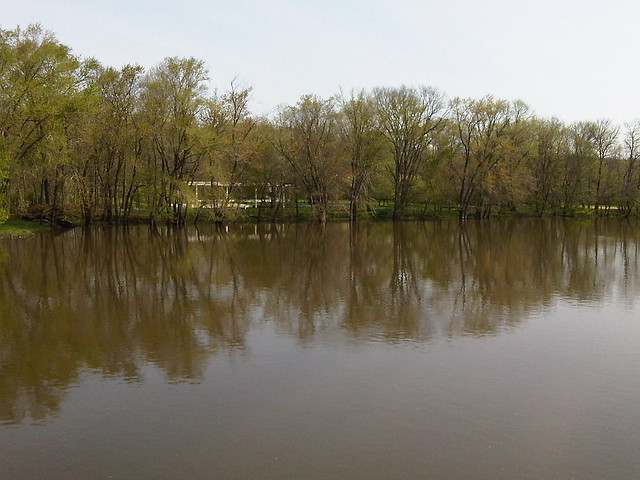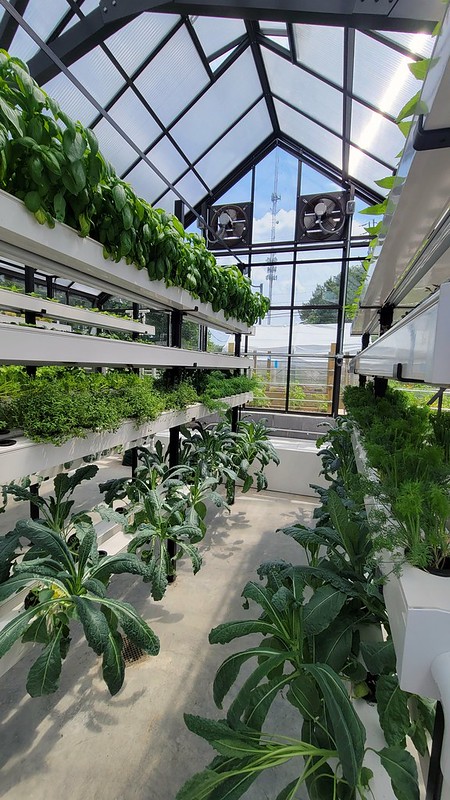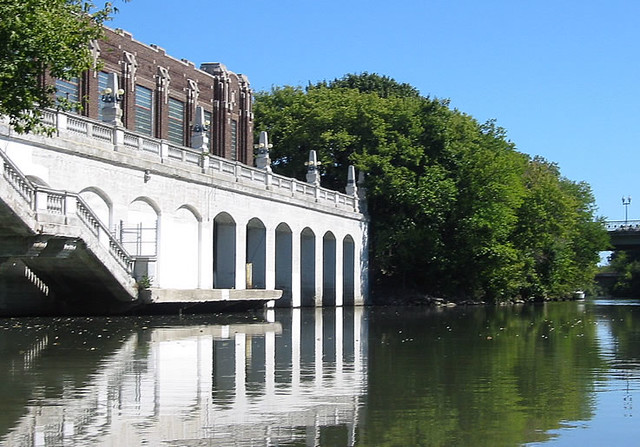Lake Erie waterfront in winter, viewed from Buffalo City Hall (all photos mine)
When I lived in Chicago, a common line of reasoning among locals (including me) was that Great Lakes cities were destined to triumph in the 21st century for the same reason they did in the 19th — its access to bountiful fresh water. Joel Brammeier, a Great Lakes advocate, notes that “Great Lakes residents like to believe that our water will save us” in CityLab, but also refutes the claim.
Upon further examination, this neat tale seems to be another popular notion that intuitively feels right, but falls apart upon further examination. I’m not post-hoc justifying Southwestern urbanization; I live in the east, because I enjoy looking at trees and rivers. But I’m not kidding myself that humans need those things.
1. The big reason why eastern US cities historically were built around water isn’t because humans drink hundreds of gallons per day, or even because 19th-century industry needed unlimited water; it’s because pre-railroad shipping used to be entirely water-borne, and pre-steam industry was entirely water-powered. Neither has been the case for over two centuries now.
The Mississippi’s falls at Minneapolis, useful first and foremost for milling, secondly for shipping, and (a distant third) for drinking – 3/4 of its region’s water is from wells
The amount of water used in industry has also declined substantially; treatment is a requirement now whereas before the approach was just to rinse everything down the drain. Wastewater recycling is how semiconductor fabrication, one of the most water-intensive manufacturing uses, thrives in Phoenix. Even water-intensive factories employ many fewer people than they once did, and water-borne shipping is mostly important for low-value bulk commodities (e.g., grain) which don’t create large numbers of jobs.
The Fox River at Plano, Illinois
2. Even a city the size of Chicago doesn’t “need” Lake Michigan quantities of fresh water, because again, actual in-home water use isn’t that high. Chicago (which also supplies most of its suburbs with water) draws one billion gallons a day from the lake — but that’s about as much water as the comparatively small Fox River, in the western suburbs, delivers (annual average). You don’t need a 3,000 year supply of something that you can simply reuse.
Chicago needed vast quantities of water in the 19th century, when dirty water was simply dumped untreated into waterways. But now treatment technology has advanced to the point where reclaimed water can be sent right back into drinking water filtration plants. It’s even used by Midwestern agricultural and industrial users, as a Wisconsin professor points out. Chicago finally began “tertiary treatment” (disinfection) of wastewater in 2015, and now local municipalities are investigating its use.
Most planning around water resources has shifted from thinking about drinking water, wastewater, and stormwater as separate categories to instead thinking about all three as “One Water.”
3. There’s ample water for urban use in the Southwest. Most water in the Southwest currently goes to agriculture, which seems absurd at first glance but makes sense considering the economics of the early 20th century: all that sun is good for plants, even if water needs to be imported at a then-reasonable cost. Replacing that agriculture elsewhere will require different inputs, like energy.
California vegetable fields
The good news is that food production can and will shift as the cost of agricultural inputs shift. As the cost of water is rising, and the cost of electricity is declining, vertical farms can now provide competitively priced leafy greens (a big Arizona/California export). Lighting was expensive in the early 20th century, but it’s getting much cheaper thanks to LEDs and cheap renewable power; vertical farms use drastically less water and fertilizer, can be mechanized more easily, and are closer to consumers.
4. Urban water prices would have to be unrealistically higher to dissuade population growth. For a family that doesn’t irrigate outdoors, the spread in monthly water bills from the Rust Belt to the Sun Belt is absolutely negligible. In 2010, a monthly water bill for a family in Las Vegas cost $1 more than in Chicago. San Diego had much pricier water ($16 more each month), but that was just 0.5% of a median family’s budget. (That’s peanuts compared to homeowners’ insurance in Florida, which costs several thousand dollars more per year yet hasn’t done much to dissuade newcomers.)
San Diego already gets much of its water from high-cost desalination, so its water rates are pretty much as high as municipal rates will get. At such prices, it makes a lot of sense to do desalination, water recycling (Las Vegas recycles 99% of indoor water use), extreme water conservation measures (like those that have cut metro Las Vegas’ water use substantially despite population growth), diverting water from irrigation and agriculture (80% of Colorado River water!), or shipping water from far away.
5. With water recycling, even Los Angeles technically doesn’t need to import water: ‘ “It will take a lot of work, but 100 percent local water is possible by 2050,” said Mark Gold, UCLA’s associate vice chancellor of environment and sustainability.’ It’s technically feasible for LA to support its population on rainwater, groundwater, and recycled water alone — not even desalination!
6. Meanwhile, it’s not as if Great Lakes states don’t also have costly drinking-water infrastructure needs, from combined sewerage to lead pipes to agricultural pollution — all of which will require costly infrastructure investments to catch up to Western cities’ water-recycling tech. As Brammeier writes, “The infrastructure, governance and incentives for economic development we swore by during the 20th century are no match for the impacts of climate change.”
Midwestern urban water infrastructure, like this elegant but smelly sewage pump along the Chicago River, can’t be taken for granted.
The Midwest also faces its own own climate change hazards; these aren’t as dramatic as sea level rise or megadroughts, but shouldn’t excuse the status quo. Fierce rainstorms and floods threaten flat, paved-over cities; Houston-esque heat and humidity will make summer unbearable in much of the Corn Belt and especially the Mississippi and Ohio valleys; and “polar vortex” cold snaps will get more frequent and severe during the winter as cold air spills down from the rapidly warming Arctic.






